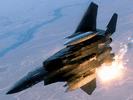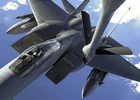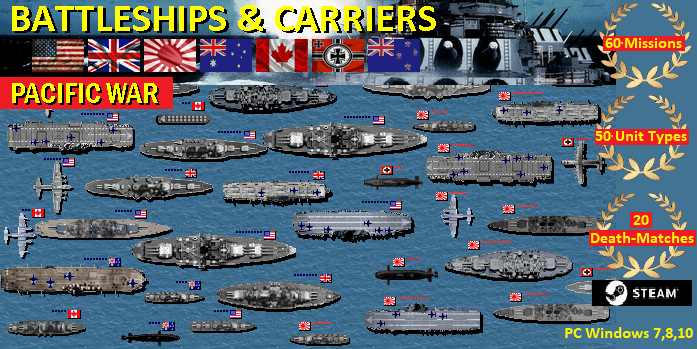USAF Plane
List
USN
FIGHTERS
A-10
Thunderbolt II
F-5 Freedom
Fighter
F-20
Tigershark
F-4 Phantom
II
F-86 Sabre,
A-4 Skyhawk,
A-6 Grumann
Intruder
F-14 Tomcat
F-16
Fighting Falcon
F-18 Hornet
F-22 Raptor
F-35 Joint
Strike Fighter
U-2 Dragon
Lady
SR-71
Blackbird
F-117
Nighthawk F117
F-22 Raptor,
F-35 Joint
Strike Fighter JSF
B-52
Stratofortress B52
F-111
B-1
Lancer
B-2
Spirit
P-3C
Orion
S-3B
Viking
CH-46
Sea Knight,
CH-53
Sea Stallion
H-3
Sea King
MH-53
Sea Dragon
SH-60
Seahawk
HH/UH-1N
Iroquois
AH-1
Cobra
UH-60
Black Hawk,
HH-60
Pave Hawk Helicopter
AH-64
Apache AH64
RQ-1
Predator
List of Aircraft
Weapons
www.battle-fleet.com
Battleship Game - WW2 Naval Strategy: the best
choice among aircraft carrier games
and submarine and battleship games.
Missions and Scenarios:
Pearl Harbor Game
Atlantic Game 1943
Sink Cruisers Game
Midway Game
Iwo Jima Game
US Marines Game
Luftwaffe Game Pacific
Torpedo Game Boats
Bismarck Game Pacific
Destroy RAF Game
Okinawa
Us Navy Submarine Game
Fleet Submarines Game
Kamikaze Game
U Boat Game
Singapore Game
Swordfish Hunt
Patrol Boats
Air Supremacy
Alert
Battleships Game
Java
Defense
Fleet Cruisers Game
Atlantic Island
Coral Sea Game
Iron Sea
Mykonos
Imperial Ocean
Long Convoy
Skagerrak
Target Los Angeles
West Pacific Game
Pacific War Game
Leyte Transport
Emperor Hirohito
Normandy Game
South Pacific Game
Destroy USAF Game
Submarine Games
US Navy Game
Free Hunt Doenitz Game
Free Hunt Spruance Game
Free Hunt Halsey Game
Imperial Navy I
Royal Navy Game
Free Hunt Pearl Harbor Games
Midway II
Kriegsmarine I
Brisbane Convoy
Clear West Coast
Fall Of Australia
Battle For Leyte
Conquer Of Japan
HMAS Perth
Road To Okinawa
Orange Ports
Emperor Defense
Prince Of Wales
San Bernardino
Pacific Race
Heavy Duty
Tokio Express
Operation Sidney
Bomber Operation
Conquer Of Italy
Heavy Cruiser Game
Frigate Hunt
Santa Cruz
Lamansh Game
Azores Transport
Norway Convoy
Invasion
Grossadmiral
Norway Ports
Drang Nach Ost
Convoy Pk30
Ciano Defense
Sir John Tovey
Free Hunt Andrews
Germans On Pacific
Silent Hunt
Antigua
Return To Midway
Kriegsmarine Game II
Royal Air Force Game
F. Hunt Lancaster
Jamamoto Game
Free Hunt USN
Free Hunt Japan
Free Hunt RAAF
Free Hunt U Boat Game
Free Hunt Aircraft Carriers Game
Free Hunt Hawaii
Free Hunt Yamato Game
Free Hunt Iwo Jima Game
Free Hunt Pacific Game
Free Hunt Torpedos
Free Hunt Convoy
Free Hunt Germany
Free Hunt Germany II
Free Hunt Italy
Free Hunt Malaya
Free Hunt Subs Game
Free Hunt B-29 Game
Free Hunt USN 1944
Devil Island
Dragoon Carriers Game
|
|
F-15 Eagle
 |
|
 |
|
 |
| F15
with F16s |
|
F-15
launching |
|
F15
fueling |
The F-15 Eagle is an all-weather,
extremely maneuverable, tactical fighter designed to
permit the US Air Force to gain and maintain air
superiority in aerial combat.
The Eagle's air superiority is achieved through
maneuverability and acceleration, range, weapons and
avionics. The F-15 has electronic systems and weaponry to
detect, acquire, track and attack enemy aircraft while
operating in friendly or enemy-controlled airspace. The
weapons and flight control systems are designed so one
person can safely and effectively perform air-to-air
combat.
| CIA / KGB intelligence game. Run your own operation game.
Travel around the world and set up espionage
game, trade with state secrets, weapon systems,
spy codes, WMD, hire secretaries, agents, lawyers
and soldiers, establish secret agent stations,
cells and bases and search for criminals and
politicians. Involve in agent game. Game contains
more than 40 missions including Nuclear Game,
Cold War Game, Secret Agent, CIA Games, USAF,
Prime Minister, RAF, Bin Laden, Sadam, KGB,
Operations Iran… |
|
United States Air Force
F-15 Eagle
The F-15's maneuverability and acceleration are achieved
through high engine thrust-to-weight ratio and low wing
loading. Low wing-loading (the ratio of aircraft weight
to its wing area) is a vital factor in maneuverability
and, combined with the high thrust-to-weight ratio,
enables the aircraft to turn tightly without losing
airspeed.
A F15 multimission avionics system includes a head-up
display, advanced radar, inertial navigation system,
flight instruments, ultrahigh frequency communications,
tactical navigation system and instrument landing system.
It also has an internally mounted, tactical
electronic-warfare system, "identification friend or
foe" system, electronic countermeasures set and a
central digital computer.
The head-up display projects through a combiner, all
essential flight information gathered by the integrated
avionics system. This display, visible in any light
condition, provides the pilot information necessary to
track and destroy an enemy aircraft without having to
look down at cockpit instruments.
The F-15's versatile pulse-Doppler radar system can look
up at high-flying targets and down at low-flying targets
without being confused by ground clutter. It can detect
and track aircraft and small high-speed targets at
distances beyond visual range down to close range, and at
altitudes down to treetop level. The radar feeds target
information into the central computer for effective
weapons delivery. For close-in dogfights, the radar
automatically acquires enemy aircraft, and this
information is projected on the head-up display. The
F-15's electronic warfare system provides both threat
warning and automatic countermeasures against selected
threats.
A variety of air-to-air weaponry can be carried by the
F-15. An automated weapon system enables the pilot to
perform aerial combat safely and effectively, using the
head-up display and the avionics and weapons controls
located on the engine throttles or control stick. When
the pilot changes from one weapon system to another,
visual guidance for the required weapon automatically
appears on the head-up display.
The Eagle can be armed with combinations of four
different air-to-air weapons: AIM-7F/M Sparrow missiles
or AIM-120 AMRAAM advanced medium range air-to-air
missiles on its lower fuselage corners, AIM-9L/M
Sidewinder or AIM-120 missiles on two pylons under the
wings, and an internal 20mm Gatling gun in the right wing
root.
Low-drag, conformal fuel tanks were especially developed
for the F15-C and F15-D models. Conformal fuel tanks can
be attached to the sides of the engine air intake trunks
under each wing and are designed to the same load factors
and airspeed limits as the basic aircraft. Each conformal
fuel tank contains about 114 cubic feet of usable space.
These tanks reduce the need for in-flight refueling on
global missions and increase time in the combat area. All
external stations for munitions remain available with the
tanks in use. AIM-7F/M Sparrow missiles, moreover, can be
attached to the corners of the conformal fuel tanks.
The F-15E is a two-seat, dual-role, totally integrated
fighter for all-weather, air-to-air and deep interdiction
missions. The rear cockpit is upgraded to include four
multi-purpose CRT displays for aircraft systems and
weapons management. The digital, triple-redundant Lear
Siegler flight control system permits coupled automatic
terrain following, enhanced by a ring-laser gyro inertial
navigation system.
For low-altitude, high-speed penetration and precision
attack on tactical targets at night or in adverse
weather, the F-15E carries a high-resolution APG-70 radar
and low-altitude navigation and targeting infrared for
night pods.
The first F-15A flight was made in July 1972, and the
first flight of the two-seat F-15B (formerly TF-15A)
trainer was made in July 1973. The first Eagle (F-15B)
was delivered in November 1974. In January 1976, the
first Eagle destined for a combat squadron was delivered.
The single-seat F-15C and two-seat F15-D models entered
the Air Force inventory beginning in 1979. These new
models have Production Eagle Package (PEP 2000)
improvements, including 2,000 pounds (900 kilograms) of
additional internal fuel, provision for carrying exterior
conformal fuel tanks and increased maximum takeoff weight
of up to 68,000 pounds (30,600 kilograms).
The F-15 Multistage Improvement Program was initiated in
February 1983, with the first production MSIP F-15C
produced in 1985. Improvements included an upgraded
central computer; a Programmable Armament Control Set,
allowing for advanced versions of the AIM-7, AIM-9, and
AIM-120A missiles; and an expanded Tactical Electronic
Warfare System that provides improvements to the ALR-56C
radar warning receiver and ALQ-135 countermeasure set.
The final 43 included a Hughes APG-70 radar.
F-15C, D and E models were deployed to the Persian Gulf
in 1991 in support of Operation Desert Storm where they
proved their superior combat capability with a confirmed
26:0 kill ratio. F-15 fighters accounted for 36 of the 39
Air Force air-to-air victories. F15-Es were operated
mainly at night, hunting SCUD missile launchers and
artillery sites using the LANTIRN system.
They have since been deployed to support Operation
Southern Watch, the patrolling of the No-Fly Zone in
Southern Iraq; Operation Provide Comfort in Turkey; in
support of NATO operations in Bosnia, and recent air
expeditionary force deployments.
F15 General Characteristics
Primary function: Tactical fighter
Contractor: McDonnell Douglas Corporation
Power plant: Two Pratt and Whitney F100-PW-220 or 229
turbofan engines with afterburners
Thrust: (C/D models) 23,450 pounds each engine
Wing span: 42.8 feet (13 meters)
Length: 63.8 feet (19.44 meters)
Height: 18.5 feet (5.6 meters)
Speed: 1,875 mph (Mach 2.5 plus)
Maximum takeoff weight: (C/D models) 68,000 pounds
(30,844 kilograms)
Ceiling: 65,000 feet (19,812 meters)
Range: 3,450 miles (3,000 nautical miles) ferry range
with conformal fuel tanks and three external fuel tanks
Crew: F-15 A/C: one; F15-B/D/E: two
Armament: One internally mounted M61 Vulcan 20mm
six-barrel cannon with 940 rounds of ammunition; four
AIM-9L/M Sidewinder and four AIM-7F/M Sparrow air-to-air
missiles, or eight AIM-120 AMRAAMs, carried externally.
F-15E can carry any combination of the above missiles, as
well as GBU16/27/28 Laser Guibed Bombs (LGBs), GBU-15
EO-guided (Electro-Optically guided, i.e. TV guided)
glide bombs, and rocket powered versions of these
(AGM-130), laser guided AGM-65 Maverick Air-to Ground
Missiles, Rockeye and CBU-49 Cluster Bombs, Fuel Air
Explosives, 'Dumb bombs' )or 'Iron bombs', i.e. unguided
bombs), and (although this is unlikely to be required)
B61 nuclear bombs.
Unit Cost: A/B models - US$30.1 million; C/D models -
US$34.3 million (flyaway costs)
Date deployed: July 1972
Inventory (USAF): Active force, 396; Reserve, 0; ANG,
126.
F-15 Variants
F-15 A
Single-seat all-weather air-superiority fighter version,
384 built 1972-79.
F-15 B
Two-seat training version, formerly designated TF-15A, 61
built 1972-79.
F-15 C
Improved single-seat all-weather air-superiority fighter
version, 483 built 1979-85.
F-15 D
Two-seat training version, 92 built 1979-85.
F-15 J
Single-seat all-weather air-superiority fighter version
for the Japan Air Self-Defense Force 139 built under
license in Japan by Mitsubishi 1981-97, 2 built in St.
Louis.
F-15 DJ
Two-seat training version for the Japan Air Self-Defence
Force. 25 Built under license in Japan by Mitsubishi
1981-97, 12 built in St. Louis.
F-15 N Sea Eagle
The F15 N was a carrier-capable variant proposed in the
early 1970s to the U.S. Navy as an alternative to the
heavier and, at the time, considered as
"riskier" technology program: F-14 Tomcat. The
F-15N-PHX was another proposed naval version capable of
carrying the AIM-54 Phoenix missile. These featured
folding wingtips, reinforced landing gear and a stronger
tail hook for shipboard operation.
F-15 Streak Eagle
One stripped and unpainted F-15A, demonstrated the
fighter's acceleration – broke eight time-to-climb
world records between 16 January and 1 February 1975. It
was delivered to the National Museum of the United States
Air Force in December 1980.
F15 S/MTD
The first F15 B was converted into a short takeoff and
landing, maneuver technology demonstrator aircraft.In the
late 1980s it received canard flight surfaces in addition
to its usual horizontal tail, along with square
thrust-vectoring nozzles. It was used as a
short-takeoff/maneuver-technology (SMTD) demonstrator.
F-15 ACTIVE
The F-15 S/MTD was later converted into an advanced
flight control technology research aircraft with thrust
vectoring nozzles.
F-15 IFCS
The F-15 ACTIVE was then converted into an intelligent
flight control systems research aircraft. F-15B 71-0290
is the oldest F-15 still flying as of January 2009.
F15 MANX
Concept name for a tailless variant of the F-15 ACTIVE,
but the NASA ACTIVE experimental aircraft was never
modified to be tailless.
F-15 Flight Research Facility
Two F-15A aircraft were acquired in 1976 for use by
NASA's Dryden Flight Research Center for numerous
experiments such as: Highly Integrated Digital Electronic
Control (HiDEC), Adaptive Engine Control System (ADECS),
Self-Repairing and Self-Diagnostic Flight Control System
(SRFCS) and Propulsion Controlled Aircraft System (PCA).
F15 was returned to the Air Force and became a static
display at Langley AFB in 1983.
F15 Operators
Israel
* Israeli Air Force has operated F-15 since 1977,
received under Peace Fox I, II and III. These aircraft
are currently organized into two F15-A/B squadrons and
one F15 C/D squadron. The first 25 F-15A/Bs were early
USAF production airframes, equipping 133 Squadron. The
second batch was temporarily embargoed as a result of the
1982 Lebanon War. The IAF had 42 F-15 A/C and 25 F-15 I
aircraft in service as of November 2008.
Japan
* Japan Air Self-Defence Force acquired 203 F-15 J and 20
F-15 DJ from 1981, of which 2 F-15 Js and 12 F15-D were
made in U.S. and the rest by Mitsubishi under license.
These aircraft are currently operated by 2 Hikotai
(squadron) of 2. Kokudan (Air Wing), Chitose Air Base, 1
Hikotai of 5. Kokudan, Nyutabaru AB, 1 Hikotai of 6.
Kokudan, Komatsu AB, 2 Hikotais of 7. Kokudan, Hyakuri AB
and 1 Hikotai of 8. Kokudan, Tsuiki AB. In June 2007, the
Air Self-Defense Force decided to upgrade certain F-15
aircraft with synthetic aperture radar pods; these
aircraft will replace RF-4 aircraft currently in service.
Japan had 157 F-15Js in use as of November 2008.
Saudi Arabia
* Royal Saudi Air Force has operated 4 squadrons of F-15
C/D (55/19) since 1981, received under Peace Sun. They
are based at Dhahran, Khamis Mushayt and Taif air bases.
A stipulation in the Camp David Peace Agreement limited
the number of Saudi F15 to 60, holding surplus air frames
in Luke AFB for RSAF pilot training. This limitation was
later abandoned. The RSAF had 139 F15 C/S Eagles in
operation as of November 2008.
United States
* United States Air Force operated 630 F15 aircraft (499
in active duty and 131 in ANG, all variants) as of
September 2008. The F-15 is being replaced by the newer
F-22 Raptor.
* F-15 Eagle Active Duty
o Air Combat Command
+ F15 1st Fighter Wing - Langley AFB, Virginia
# 71st Fighter Squadron
+ F15 33d Fighter Wing - Eglin AFB, Florida
# 58th Fighter Squadron
+ F15 53d Wing - Eglin Air Force Base, Florida
# 85th Test and Evaluation Squadron
# 422d Test and Evaluation Squadron, Nellis AFB, Nevada
+ F-15 57th Wing - Nellis AFB, Nevada
# 65th Aggressor Squadron
+ F15 366th Fighter Wing - Mountain Home AFB, Idaho
# 390th Fighter Squadron
o Air Education and Training Command
+ F15 325th Fighter Wing - Tyndall AFB, Florida
# F-15 2d Fighter Squadron
# F-15 95th Fighter Squadron
o Pacific Air Forces
+ F15 3d Wing - Elmendorf AFB, Alaska
# F-15 19th Fighter Squadron
+ F15 18th Wing - Kadena AB, Japan
# 44th Fighter Squadron
# 67th Fighter Squadron
o United States Air Forces in Europe
+ F15 48th Fighter Wing - RAF Lakenheath, England
# 493d Fighter Squadron
* F-15 Air National Guard
o Florida Air National Guard
+ F15 125th Fighter Wing - Jacksonville International
Airport/Jacksonville ANGB
# 159th Fighter Squadron
o Hawaii Air National Guard
+ F-15 154th Wing - Hickam AFB
# 199th Fighter Squadron
o Louisiana Air National Guard
+ F-15 159th Fighter Wing - NAS/JRB New Orleans
# 122d Fighter Squadron
o Massachusetts Air National Guard
+ F15 104th Fighter Wing - Barnes Municipal
Airport/Barnes ANGB
# 131st Fighter Squadron
o Montana Air National Guard
+ F15 120th Fighter Wing - Great Falls International
Airport/Great Falls ANGB
# 186th Fighter Squadron
o Oregon Air National Guard
+ F15 142d Fighter Wing - Portland International
Airport/Portland ANGS
# 123d Fighter Squadron
+ F15 173d Fighter Wing - Kingsley Field
Text is available
under the terms of the GNU Free Documentation License
|
On 1 May 1983, during an Israeli
Air Force training dogfight, an F15-D collided with an
A-4 Skyhawk. Unknown to pilot Zivi Nedivi and his
copilot, the right wing of the Eagle was sheared off
roughly two feet (60 cm) from the fuselage. The F-15
entered an uncontrollable spin after the collision. Zivi
decided to attempt recovery and engaged afterburner to
increase speed, allowing him to regain control of the
aircraft. The pilot was able to prevent stalling and
maintain control because of the lift generated by the
large horizontal surface area of the fuselage, the
stabilators and remaining wing areas
The F-15
landed at twice the normal speed to maintain the
necessary lift, and its tailhook was torn off completely
during the landing. Zivi managed to bring his F-15 to a
complete stop approximately 20 ft (6 m) from the end of
the runway. He was later quoted as saying "(I)
probably would have ejected if I knew what had
happened." The fuel leak and vapors along the wing
had prevented him from seeing what had happened to the
wing itself.
| |
 |
 |
| Turn-based WW2
naval game, extension to the classic
Submarine game (Battleship game) where
ships/planes/subs can move. Contains plenty of
game missions, game campaigns and 40 ship,
submarine, airplane ana port artillery types,
with combat maps up to 96X96 large. |
| |
| |
|
Fashion Tycoon is
a business fashion management game.
You'll build your multinational fashion company,
destroy competition, hire employees, fashion
models and businessman, establish company
objects, run fashion shows and brand campaigns.
There is a more than 30 missions with different
game objectives. You can hire more than 100
fashion models, directors, brand experts,
celebrities. |
| |
 |
 |
Turn-based space
strategy game represents World War 4
conflict on tactical level.
The user-friendly game engine allows more than 60
unit types, including planet battleships, galaxy
cruisers, death-stars, stealth units, star
destroyers, air-space interceptors, explorers,
planet artillery and radars. |
| |
| |
 |
| Tycoon Strategy
Game - build your own world business empire as an
arms dealer tycoon. Travel around the world,
trade with more than 400 weapon systems, hire
secretaries, bodyguards, lawyers, fighters and
tanks, establish companies and search for
criminals and hostages. |
| |
On 19 March 1990, an F-15 from the 3rd Wing stationed at
Elmendorf AFB, AK accidentally fired an AIM-9M Sidewinder
missile at another F-15. The damaged aircraft was able to
make an emergency landing; it was subsequently repaired
and returned to service.
On 22 November 1995, during air-intercept training over
the Sea of Japan, a Japanese F-15J flown by Lt. Tatsumi
Higuchi was shot down by a AIM-9L Sidewinder missile
accidentally fired by his wingman in an incident similar
to the one that occurred on 19 March 1990. The pilot
ejected safely. Both F-15Js involved were from JASDF
303rd Squadron, Komatsu AFB.
On 26 March 2006 during a low flying training exercise
over the Scottish Highlands, two US Air Force F-15Cs
crashed near the summit of Ben Macdui in the Cairngorms.
Both, Lieutenant Colonel Kenneth John Hyvonen and Captain
Kirk Jones died in the accident which would later result
in a court martial for an RAF air traffic controller, who
was later found not guilty.
On 2 November 2007, a 27-year-old F-15C (s/n 80-0034 of
the 131st Fighter Wing) crashed during air combat
maneuvering training near St. Louis, Missouri. The pilot,
Maj. Stephen W. Stilwell, ejected but suffered serious
injuries. The crash was the result of an in-flight
breakup due to structural failure. On 3 November 2007,
all non-mission critical models of the F-15 were grounded
pending the outcome of the crash investigation, and on
the following day, grounded non-mission critical F-15s
engaged in combat missions in the Middle East. By 13
November 2007 over 1,100 were grounded worldwide after
Israel, Japan and Saudi Arabia grounded their aircraft as
well. F15-Es were cleared on 15 November 2007 pending
aircraft passing inspections. On 8 January 2008, the USAF
cleared 60 percent of the F-15A-D fleet for return to
flight. On 10 January 2008, the accident review board
released its report stating the 2 November crash was
related to the longeron not meeting drawing
specifications. The Air Force cleared all its grounded
F-15A-D fighters for flight on 15 February 2008 pending
inspections, reviews and any needed repairs. In March
2008, Stilwell, the injured pilot, filed a lawsuit
against Boeing, the F-15's manufacturer.
|
